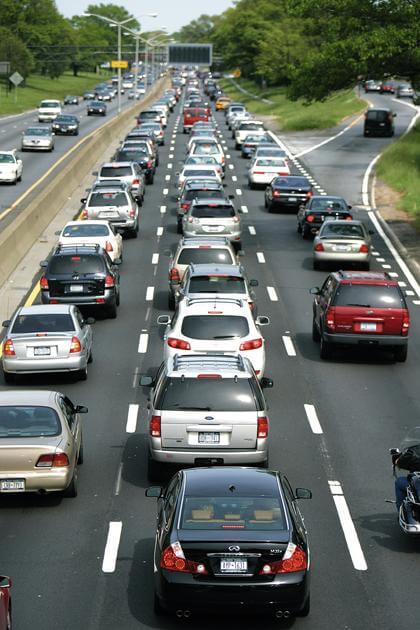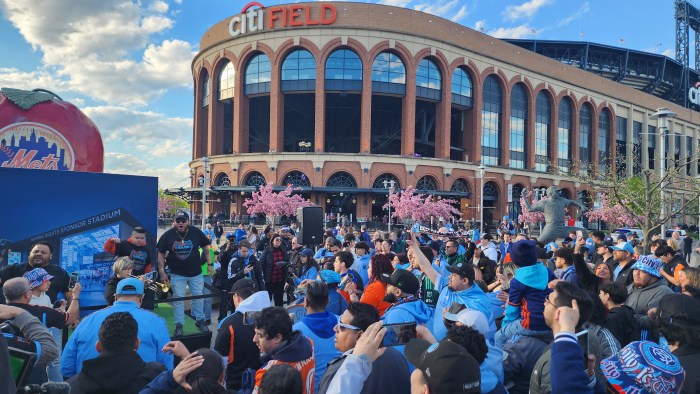By Philip Newman
It turns out those exasperating traffic backups caused by highway accidents on throughfares such as the Grand Central Parkway or the Van Wyck often get worse because passing motorists not only slow down to gawk but in the process rear−end other cars.
And did you know that SUV drivers, perhaps because of so many safety features, are less apt to buckle their seatbelts and more likely to talk on cell phones and drive recklessly than those operating cars? Or that most accidents occur on sunny days involving sober drivers?
Or that people in top−down convertibles are less likely to honk at pedestrians or other motorists or drive as aggressively as drivers more conspicuous inside cars? Or that motorists honk at older or out−of−state cars more than at new or luxury automobiles?
Tom Vanderbilt’s book, “Traffic: Why We Drive The Way We Do (And What It Says About Us),” published by Alfred A. Knopf, is replete with fascinating information about driving on America’s streets and highways.
Vanderbilt exhaustively discusses such topics as whether it is better to merge from three lanes into two early or late and whether traffic signs actually help or diminish safety (in parts of Europe, for example, a child’s bicycle placed beside the highway gets people to slow down more effectively than a “children playing” sign).
Yes, traffic authorities say it often takes less than a fender−bender to get a driver to slow down and gawk at an accident site. Rubberneckers often slow to get a closer look over such items as a discarded sofa.
“More and more they now stop altogether to take photos of smashups with cell phone cameras,” Vanderbilt wrote.
Police have tried to erect gigantic screens to shield crash sites from gawkers, but have largely abandoned that because trucks hauling the screens cannot get there due to too much traffic.
He also discusses a condition affecting drivers that traffic experts call “awake at the wheel.” It is when a motorist suddenly realizes he or she cannot remember what has happened in the past three or four minutes.
And why all this mid−day traffic when the number of cars ought to be diminished at that time?
Vanderbilt said surveys indicate much of the off−rush hour traffic is women shopping, taking their children to a piano lesson and picking up dry cleaning, or people buying seafood at Trader Joe’s but driving four miles to a different store where the bread is better and to a third location to look at power mowers or sporting goods.
“We now take auto trips to the many things we used to do at home,” Vanderbilt wrote. “Like driving for a latte at Starbucks.”
Many people ask why roads are so jammed with cars and trucks even after more lanes have been added.
“Part of the answer is that we are adding new drivers faster than we can add new blacktop,” Vanderbilt wrote.
Take suburban Montgomery County, Md., just outside Washington, D.C., as an example.
The population grew by 7 percent between 1976 and 1985. The number of jobs grew by 20 percent, but vehicle registrations almost doubled.
But Vanderbilt pauses to enlighten us about how traffic conditions were never as good as we think they were, not just in the days of 35−cent−a−gallon gasoline, the $1,900 Ford V8 and the Buick Roadmaster.
“In ancient Rome, chariot traffic grew so intense that Caesar, the self−proclaimed ‘curator viarum or ‘director of the great roads,’ declared a daytime ban on carts and chariots ‘except to transport construction materials for the temples of the gods or other great public works or to take away demolition materials,’ ” writes Vanderbilt.
Vanderbilt also considers motorists’ attitudes about traffic safety:
“More people are killed on American roads each month than were killed in the Sept. 11 attacks. In the wake of those attacks, polls found that many citizens thought it was acceptable to curtail civil liberties to fight terrorism,” Vanderbilt says.
“Those same citizens, meanwhile, in polls have routinely resisted traffic measures designed to reduce the annual death toll, such as lowering speed limits, more red light cameras and stiffer blood alcohol limits.”
Reach contributing writer Philip Newman by e−mail at news@timesledger.com or by phone at 718−229−0300, Ext. 136.

































